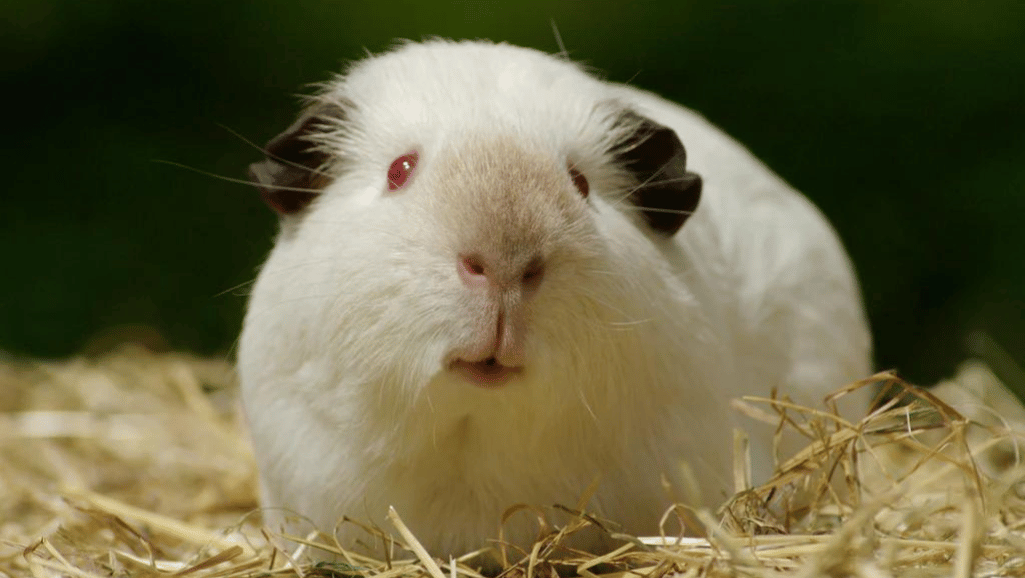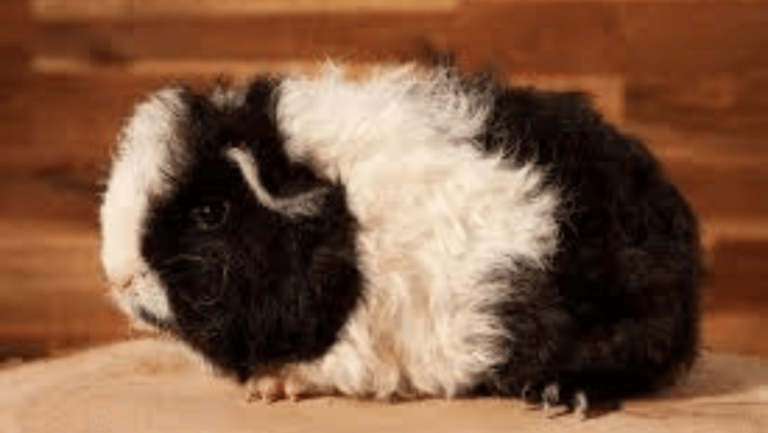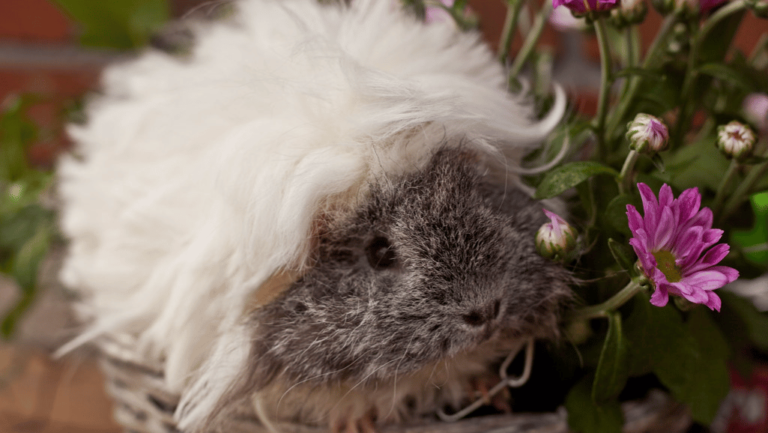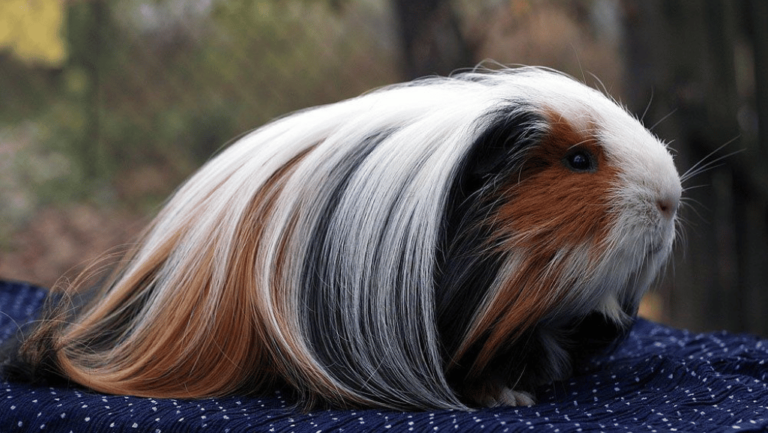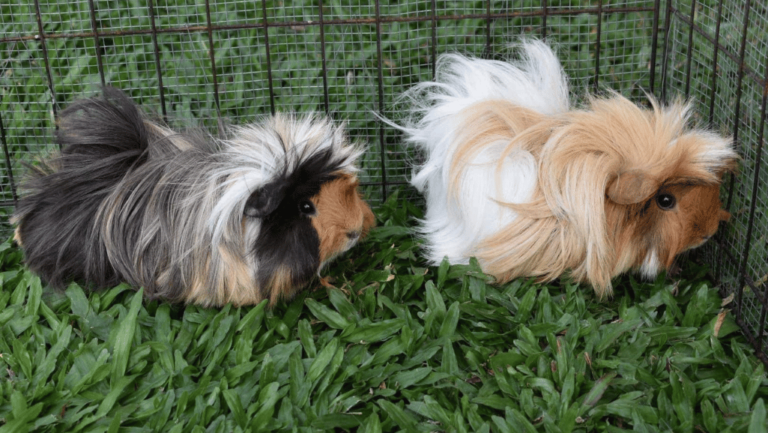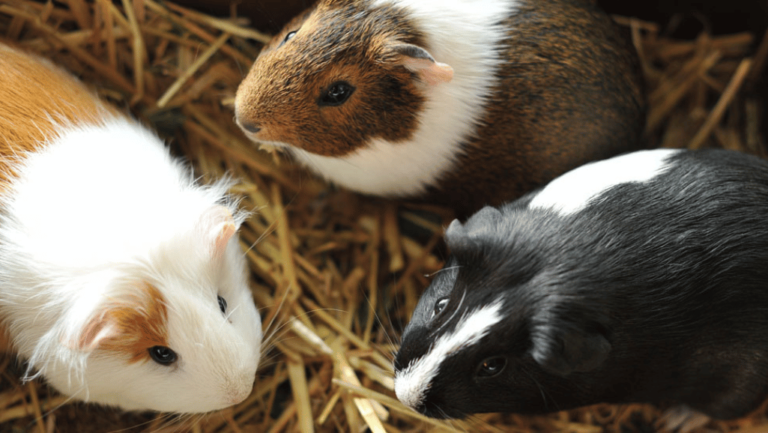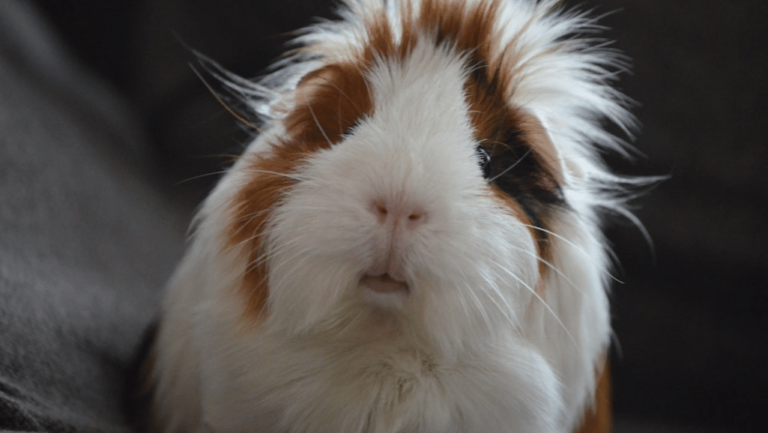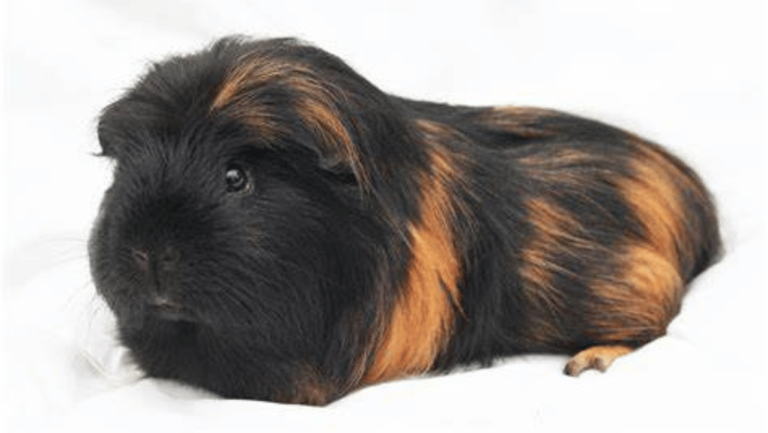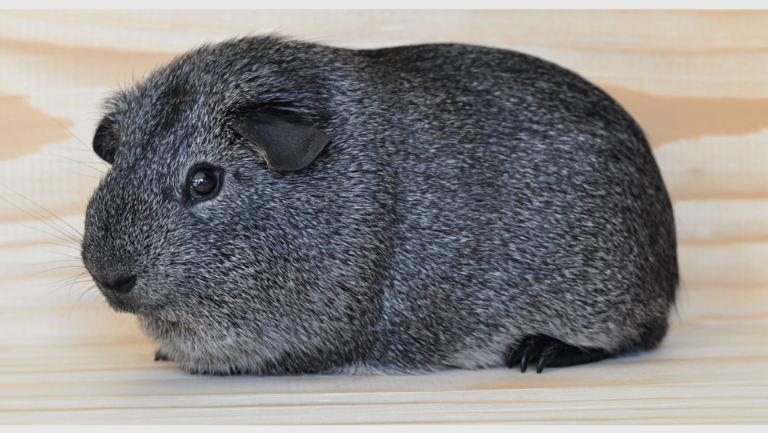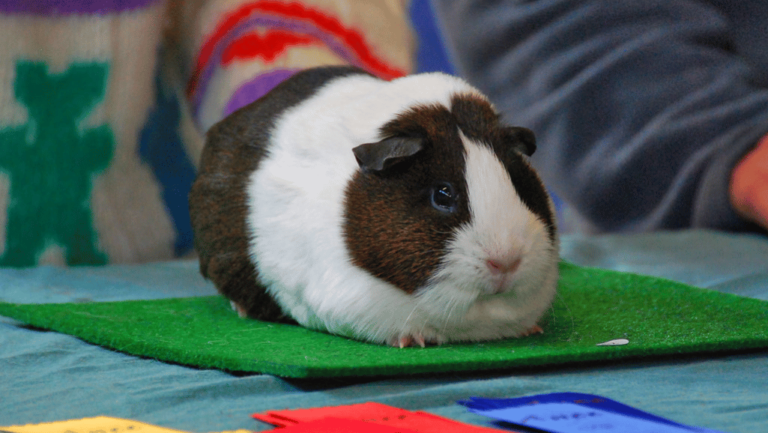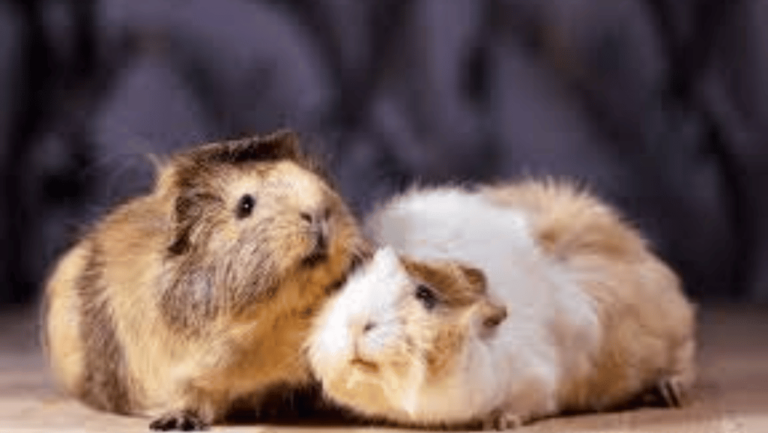Welcome to our comprehensive guide on the fascinating Himalayan Guinea Pig, a beloved breed known for its striking coloration and gentle temperament. If you are a fan of cavy varieties or a pet rodent enthusiast, you’re in for a treat! In this article, we will delve into the unique characteristics and care requirements of the Himalayan Guinea Pig, shedding light on why they make such wonderful companions.
Key Takeaways:
- Himalayan Guinea Pigs are captivating small pets with striking coloration.
- They are known for their gentle and affectionate nature.
- Proper care includes a comfortable living environment, a balanced diet, regular veterinary check-ups, and social interaction.
- Himalayan Guinea Pigs can be bred but require careful consideration and knowledge.
- Ensure the well-being of your Himalayan Guinea Pig by providing a suitable shelter, nutritious food, and regular hygiene practices.
Origins and Name of the Himalayan Guinea Pig
The Himalayan Guinea Pig, a beloved small pet known for its striking coloration and calm temperament, has an interesting history and a slightly misleading name.
Contrary to what its name suggests, the Himalayan Guinea Pig did not originate from the Himalayan mountain range. Instead, it is believed to have originated in South America, specifically in the Andean region. The name “Himalayan” likely comes from the resemblance of its coloration to animals found in the Himalayas, such as the Himalayan rabbit and Siamese cat.
The coat of the Himalayan Guinea Pig is predominantly white with dark points on its ears, nose, feet, and sometimes tail. This color pattern is similar to the fur coloration of animals that adapt to snowy environments, such as those found in the Himalayas. Despite the lack of a direct connection to the region, the name “Himalayan” has stuck and become widely associated with this unique breed.
Characteristics of the Himalayan Guinea Pig
The Himalayan Guinea Pig is a unique breed known for its distinct characteristics. Let’s explore the striking coloration, personality, size, and lifespan of these delightful pets.
Striking Coloration
One of the most striking features of the Himalayan Guinea Pig is its color pattern. These little companions have pure white fur with contrasting dark points on their ears, nose, feet, and sometimes tail. This beautiful combination adds to their charm and makes them visually appealing.
Personality
Himalayan Guinea Pigs are known for their gentle and affectionate nature. They have a friendly disposition and enjoy human interaction. Their calm and sociable personalities make them great companions for individuals and families alike.
Size
These small pets are compact in size, typically weighing around 1.5 to 2.5 pounds. They measure approximately 8 to 10 inches in length. Their petite size makes them easy to handle and care for, especially for those who prefer smaller pets.
Lifespan
With proper care and a nurturing environment, Himalayan Guinea Pigs can live for 5 to 7 years. Providing a balanced diet, regular veterinary check-ups, and a clean living space are essential for ensuring their long and healthy lifespan.
Now that we’ve explored the unique characteristics of the Himalayan Guinea Pig, let’s move on to understanding how to properly care for these adorable pets.
Caring for Himalayan Guinea Pigs
To ensure the well-being of your Himalayan Guinea Pig, it is important to provide a comfortable and safe living environment. This includes a spacious cage with a solid bottom and wire top, safe and absorbent bedding, a balanced diet, socialization, and regular grooming.
Cage
The cage for your Himalayan Guinea Pig should have a solid bottom to prevent injury to their feet and wire top for proper ventilation. A spacious cage is essential as these small pets need ample room to move around and exercise. Provide hiding spots and tunnels for mental stimulation.
Bedding
Choose safe and absorbent bedding for your Himalayan Guinea Pig’s cage. Avoid cedar or pine wood shavings as they can be harmful to their respiratory system. Opt for bedding made of paper, hay, or fleece that is soft and comfortable for your pet.
Diet
A well-balanced diet is crucial for the health of your Himalayan Guinea Pig. They should have access to fresh water at all times. Their diet should consist of high-quality guinea pig pellets, fresh hay for dental health and digestive purposes, and a variety of fresh vegetables that are safe for guinea pigs to consume.
Socialization
Himalayan Guinea Pigs are social animals and thrive on human interaction and companionship. Spend quality time with your pet, handling them gently and providing opportunities for play and exercise. Consider adopting a pair of Himalayan Guinea Pigs to ensure they have companionship.
Grooming
Regular grooming is necessary to keep your Himalayan Guinea Pig’s coat in good condition. Brush their fur gently to remove loose hairs and prevent matting. Check their nails regularly and trim them if needed. Additionally, keep an eye on their teeth as they continually grow and may require dental care from a veterinarian.
Healthcare for Himalayan Guinea Pigs
Regular veterinary check-ups are crucial to ensure the well-being of your Himalayan Guinea Pig. These check-ups allow for monitoring their overall health and catching any potential issues early on. It is particularly important to pay special attention to dental care as the teeth of Himalayan Guinea Pigs continuously grow.
Regular dental maintenance is essential to prevent dental problems and ensure proper eating habits. Signs of dental issues include decreased appetite, difficulty eating, weight loss, drooling, and overgrown teeth. If you notice any of these signs, it is important to consult a veterinarian with experience in small animal care.
During veterinary check-ups, the veterinarian will conduct a thorough physical examination, check the guinea pig’s teeth, and may recommend additional diagnostic tests or treatments. They will also provide guidance on proper nutrition, grooming, and any other specific care needs your Himalayan Guinea Pig may require.
Remember, proactive healthcare plays a vital role in keeping your Himalayan Guinea Pig happy and healthy throughout their life.
Signs of Dental Issues in Himalayan Guinea Pigs:
- Decreased appetite
- Difficulty eating
- Weight loss
- Drooling
- Overgrown teeth
Consulting with a veterinarian who specializes in small animal care is crucial if you notice any of these signs or suspect that your Himalayan Guinea Pig may have dental issues.
| Food | Description |
|---|---|
| Quality Guinea Pig Pellets | Provides essential nutrients and helps wear down teeth |
| Timothy Hay | Assists in wearing teeth down naturally |
| Fresh Vegetables | Provides additional chewing exercise to maintain dental health |
| Avoid Sugary Treats | Sugar can contribute to dental issues and weight gain |
Himalayan Guinea Pigs as Pets
Himalayan Guinea Pigs make wonderful pets, particularly for families with older children. These social creatures enjoy human interaction and are known for their friendly and gentle nature. Here are a few reasons why Himalayan Guinea Pigs are an excellent choice as pets:
- Sociability: Himalayan Guinea Pigs are highly social animals that thrive on companionship. They enjoy interacting with their human owners and can be quite affectionate.
- Safe for Children: Himalayan Guinea Pigs are generally docile and unlikely to bite, making them suitable for families with children. However, it is essential to supervise younger children to ensure gentle handling and minimize stress for the guinea pigs.
- Low Maintenance: Himalayan Guinea Pigs are relatively low-maintenance pets. They require a clean and spacious cage, a balanced diet, and regular social interaction. Grooming needs are minimal, with occasional nail trimming and brushing.
| Benefits of Himalayan Guinea Pigs as Pets | Considerations |
|---|---|
| Social animals that love human interaction | |
| Safe and suitable for families with older children | |
| Low-maintenance pets |
As with any pet, it is important to provide Himalayan Guinea Pigs with a suitable environment, proper nutrition, and regular veterinary care. Additionally, spending quality time with your guinea pigs through gentle handling, playtime, and bonding activities will help strengthen your relationship and ensure their happiness.
Housing and Care for Himalayan Guinea Pigs
Providing a comfortable and safe living environment is crucial for the well-being of Himalayan Guinea Pigs. These small pets have a sensitivity to direct sunlight, so it’s important to offer them a sheltered and shady home.
A large hutch with a solid floor is recommended to provide ample space for your Himalayan Guinea Pig to move around and explore. This will help them stay active and happy. Additionally, a spacious hutch allows for better air circulation, which is essential to prevent respiratory issues.
Bedding
When choosing bedding for your Himalayan Guinea Pig, opt for materials that are safe and absorbent. Good options include hay, straw, or wood shavings. These bedding materials not only provide a comfortable surface for your pet, but they also help maintain proper hygiene within the hutch.
Food
The diet of a Himalayan Guinea Pig should consist of a variety of fresh vegetables, high-quality hay, and specially-made guinea pig pellets. The fresh vegetables should be offered daily, such as leafy greens, bell peppers, and carrots.
A constant supply of fresh hay is essential for their dental health and digestive system. Make sure to provide them with ample hay to satisfy their natural foraging instinct.
Play and Exercise
Himalayan Guinea Pigs are active animals that require opportunities for play and exercise. Provide them with safe toys, tunnels, and opportunities for exploration within their hutch. Supervised free-roaming time outside of the hutch can also be beneficial, as long as the surroundings are safe and secure.
Hygiene
Maintaining proper hygiene is essential for the health and well-being of your Himalayan Guinea Pig. Clean the hutch regularly, removing any soiled bedding and waste. Additionally, check their fur for any signs of matting or debris and gently brush them if necessary. Ensure their water bottle and food dishes are cleaned and refilled daily.
| Aspect | Guidelines |
|---|---|
| Shelter | Provide a large hutch with a solid floor for ample space. |
| Bedding | Choose safe and absorbent materials such as hay or wood shavings. |
| Food | Offer a balanced diet of fresh vegetables, hay, and guinea pig pellets. |
| Play and Exercise | Provide toys, tunnels, and opportunities for supervised play and exploration. |
| Hygiene | Clean the hutch regularly, groom their fur, and maintain clean food and water dishes. |
Himalayan Guinea Pig Breeding and Costs
Himalayan Guinea Pigs are an adorable and popular breed that can be bred with proper knowledge and consideration. Breeding is typically done by professional breeders who prioritize the health and safety of both the mother and offspring. However, it’s essential to understand the costs and responsibilities associated with breeding and caring for these precious pets.
Breeding Himalayan Guinea Pigs
Breeding Himalayan Guinea Pigs requires expertise and careful planning to ensure successful and healthy offspring. It’s recommended to seek guidance from experienced breeders who understand the intricacies of breeding techniques and genetics. Breeding should only be undertaken if you have the resources, knowledge, and time to provide proper care for the pregnant guinea pig and her potential offspring.
The Importance of Professional Breeders
Professional breeders play a crucial role in maintaining the health and breed standards of Himalayan Guinea Pigs. They possess extensive knowledge about genetics, health issues, and breeding techniques, ensuring responsible breeding practices. Working with a reputable breeder ensures you receive a healthy guinea pig and ongoing support throughout its life.
Considerations and Costs
Before embarking on breeding Himalayan Guinea Pigs, it’s essential to consider the costs involved. Breeding requires financial investment in terms of acquiring suitable breeding stock, veterinary care, quality food, and appropriate housing. Additionally, you may need to invest in specialized equipment and supplies for the birthing process and the care of the newborns.
As a responsible breeder, you may also need to factor in the costs of spaying or neutering your guinea pigs to prevent unwanted pregnancies and potential health issues. Spaying or neutering is critical to avoiding complications for female guinea pigs and reducing the risk of certain reproductive diseases for males.
Offspring Care and Welfare
When breeding Himalayan Guinea Pigs, it’s important to prioritize the welfare of the offspring. Ensure they have ample space, a nutritious diet, and appropriate socialization. Regular veterinary check-ups, vaccinations, and health monitoring are essential to ensure the well-being of the young guinea pigs.
Affordability and Accessibility
While breeding Himalayan Guinea Pigs can be a rewarding experience, it’s essential to acknowledge that it may not be a cost-effective endeavor for everyone. The costs associated with responsible breeding, ongoing care, and potentially finding suitable homes for the offspring should be carefully considered.
Breed Responsibly and Carefully
Breeding Himalayan Guinea Pigs requires a commitment to their well-being, proper planning, and a thorough understanding of their specific needs. It’s always advisable to consult with professional breeders and experts in breeding techniques to ensure the health, safety, and happiness of both the guinea pigs and their offspring.
The Unique Colour Development of Himalayan Guinea Pigs
Himalayan Guinea Pigs have a fascinating color development process that occurs over several months. The coloration of their fur is closely linked to the temperature of their environment. It’s interesting to note that warmer temperatures can actually cause their colors to fade.
This unique characteristic of Himalayan Guinea Pigs sets them apart from other breeds. Their gradual color transformation adds to their allure and makes them even more captivating as pets. As owners, it’s important to provide them with an environment that maintains the ideal temperature to preserve their beautiful and distinct coloring.
Temperature and Colour Preservation
The color development of Himalayan Guinea Pigs is directly influenced by temperature. This breed features a genetic trait known as “temperature-sensitive albinism.” When exposed to cooler temperatures, their fur develops darker pigmentation, resulting in the distinct points on their ears, nose, feet, and tail.
However, in warmer temperatures, their fur gradually lightens, leading to a fading effect on their coloration. It’s crucial to provide them with an environment that maintains a moderate temperature range to preserve their vibrant colors and showcase their unique beauty.
Caring for Himalayan Guinea Pigs’ Coloration
To ensure the vibrant color development of your Himalayan Guinea Pig, it’s essential to prioritize their comfort and well-being. Here are some tips:
- Keep their habitat at an optimal temperature range of around 65-75°F (18-24°C) to prevent excessive color fading.
- Avoid exposing them to extreme temperatures, both hot and cold, as it can negatively impact their coloration.
- Provide a well-ventilated enclosure with proper insulation to ensure a stable and comfortable environment.
- Regularly monitor the temperature in their living space using a reliable thermometer.
- Consult with a veterinarian who specializes in small animals for additional guidance on maintaining a suitable temperature for your Himalayan Guinea Pig.
By implementing these care practices, you can help your Himalayan Guinea Pig maintain their unique and stunning coloration, showcasing their true beauty for years to come.
Conclusion
The Himalayan Guinea Pig is a captivating and endearing small pet, praised for its striking coloration and gentle disposition. These unique breed of guinea pigs can bring joy and companionship to your home for years to come, making them the ideal companions for individuals and families alike.
To ensure the well-being of your Himalayan Guinea Pig, providing a suitable living environment is crucial. This includes a comfortable and spacious cage, safe and absorbent bedding, and ample opportunities for exercise and play. Additionally, a balanced diet consisting of guinea pig pellets, fresh hay, and a variety of vegetables should be provided to meet their nutritional needs.
Regular veterinary care is essential to keep your Himalayan Guinea Pig in optimal health. This includes scheduled check-ups to monitor their overall well-being and dental care, as their teeth continuously grow. Social interaction and regular grooming sessions are also important to maintain their happiness and hygiene.
With their captivating appearance and gentle nature, Himalayan Guinea Pigs are truly a unique breed. By providing them with proper care and attention, you will not only enjoy their company but also ensure their well-being and happiness as cherished members of your family.
FAQ
What is the temperament of a Himalayan Guinea Pig?
Himalayan Guinea Pigs are known for their gentle and affectionate nature.
How big do Himalayan Guinea Pigs grow?
Himalayan Guinea Pigs typically weigh around 1.5 to 2.5 pounds and measure 8 to 10 inches in length.
How long do Himalayan Guinea Pigs live?
With proper care, Himalayan Guinea Pigs can live for 5 to 7 years.
What kind of living environment do Himalayan Guinea Pigs need?
Himalayan Guinea Pigs require a spacious cage with a solid bottom and wire top.
What should I feed my Himalayan Guinea Pig?
A balanced diet for a Himalayan Guinea Pig includes guinea pig pellets, fresh hay, and vegetables.
Are Himalayan Guinea Pigs suitable for families with children?
Yes, Himalayan Guinea Pigs make great pets, especially for families with older children, as they are sociable and unlikely to bite.
What kind of housing do Himalayan Guinea Pigs need?
Himalayan Guinea Pigs should have a large hutch with a solid floor and safe bedding.
How do I care for the dental health of a Himalayan Guinea Pig?
Regular veterinary check-ups are important, especially for dental care as their teeth continuously grow.
Can Himalayan Guinea Pigs be bred?
Yes, but breeding should be done by professional breeders with proper knowledge and consideration for the health and safety of the mother and offspring.
How does the fur color of Himalayan Guinea Pigs develop?
The fur color of Himalayan Guinea Pigs develops over several months and is closely related to the temperature of their environment.


